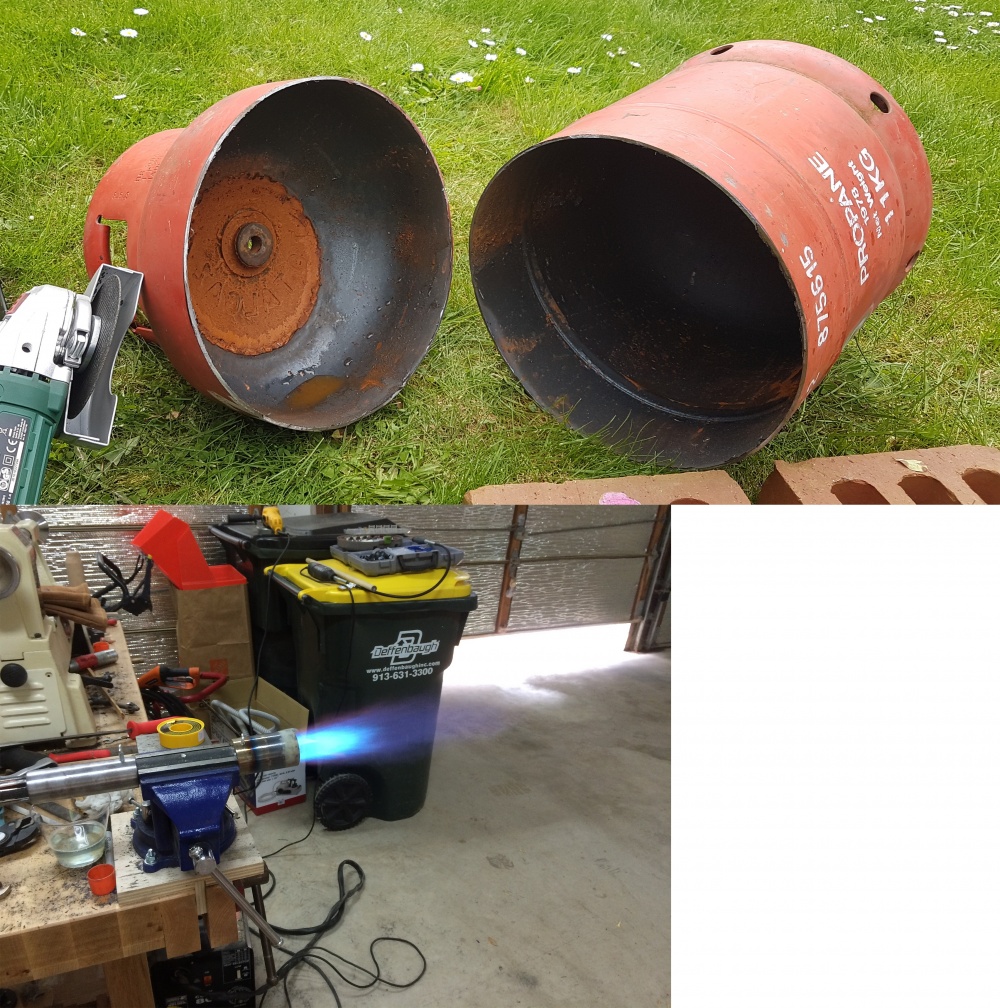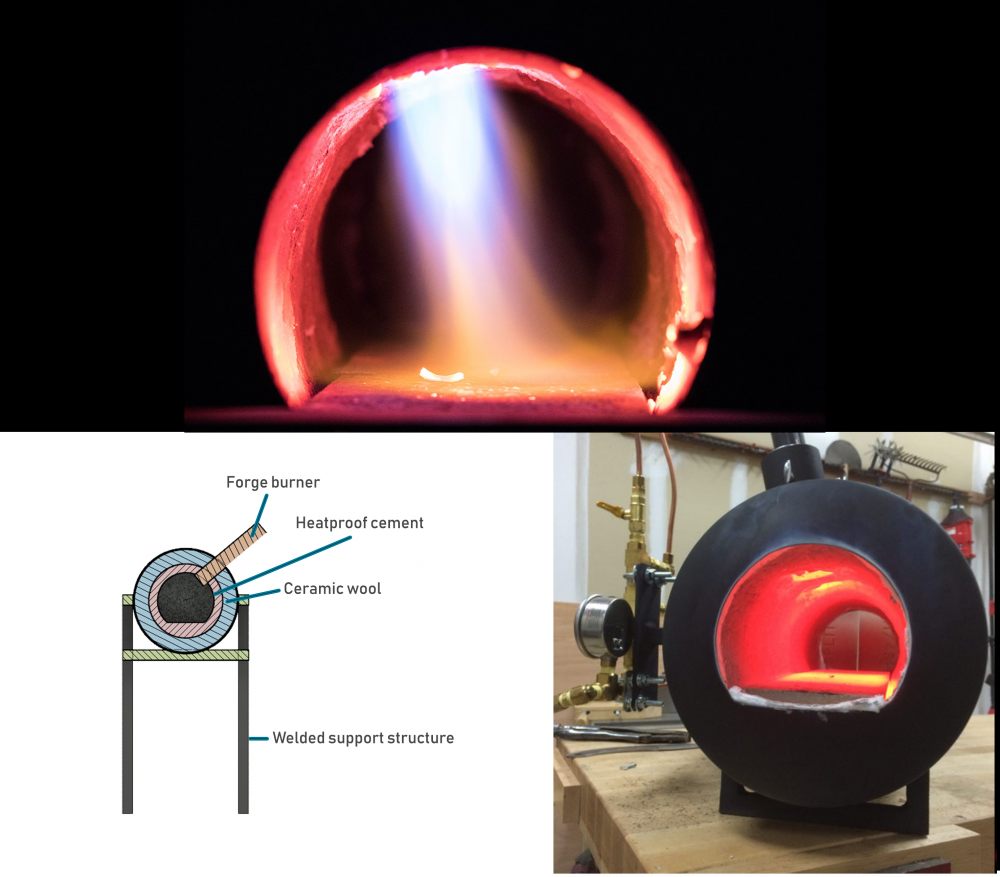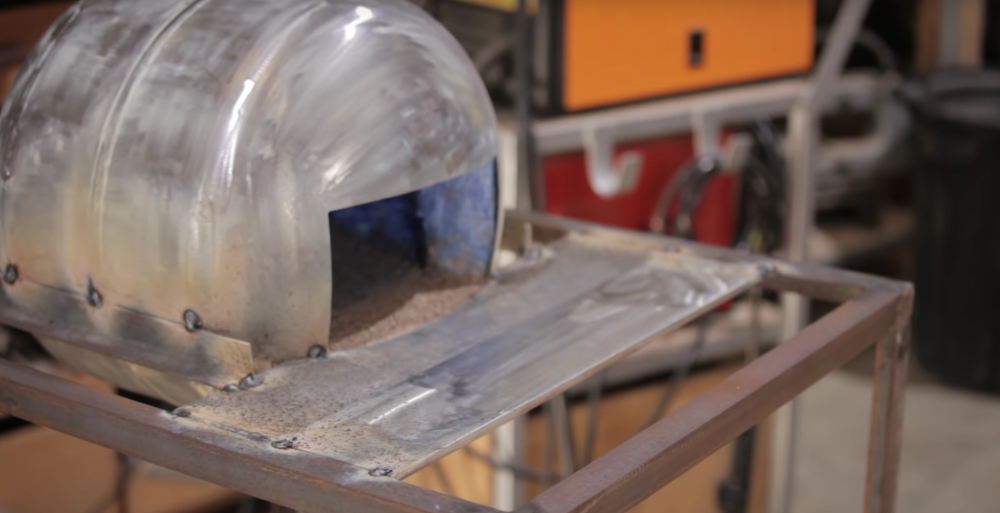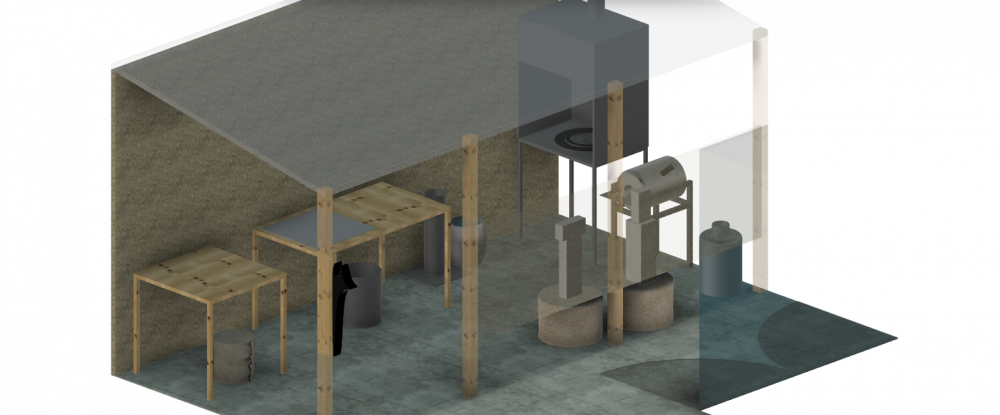Difference between revisions of "Blacksmithing"
(Created page with " ==Method statement== ==Risk assessment== ==Forge construction process== left File:2-forge-assembly.png|Put...") |
m (→Method statement) |
||
| Line 1: | Line 1: | ||
| − | ==Method statement== | + | ==Method statement== |
| + | ===Blacksmithing=== | ||
| + | ===Outline of working environment=== | ||
| + | The smithing will take place outside. | ||
| + | The forge will have a guard on the rear and chimney above to prevent debris from falling behind the work area and to ensure fumes are moved efficiently away from the work area. | ||
| + | |||
| + | The Anvil is secured to the tree stump and had additional weight added in the form of chains, these also help to dampen the noise. | ||
| + | |||
| + | The tools are placed on the tool bench and include all the tools needed for the intended job. | ||
| + | Method Statement | ||
| + | Pre activity checks | ||
| + | *Ensure the work area and 5 meters surrounding area is clear of all rubble, loose articles, trip hazards and flammable items. | ||
| + | *All tools and equipment needed for the activity should be collected and stored safely nearby. | ||
| + | **Hammers | ||
| + | **Tongs | ||
| + | **Spare Coal Coke | ||
| + | **Metal to be forged | ||
| + | **Quenching bucket | ||
| + | *The equipment, including the forge itself, the anvil, hammers and tongs should be inspected to check they are not damaged and are in working order. | ||
| + | *All required PPE should be worn: | ||
| + | **Safety goggles, | ||
| + | **Sturdy Leather boots, | ||
| + | **Leather Apron or welders overalls,. | ||
| + | **No flammable synthetic clothes to be worn as these can melt and cause severe burns | ||
| + | *Optional PPE may be worn: | ||
| + | **Gloves, these can protect from burns but can also inhibit fine detailed work. | ||
| + | *Ensure you know where the fire extinguishers and sand buckets are. | ||
| + | *Ensure that you are knowledgeable on the particular requirements of the type of metal you are choosing to forge. | ||
| + | |||
| + | ===Activity=== | ||
| + | Light the forge using firelighters with the electric bellows on low. | ||
| + | Ensure that the amount of coal used does not exceed the combustion area. | ||
| + | |||
| + | For the duration of the activity it is import to increase and decrease the airflow as required to control the size and temperature of the coals. | ||
| + | |||
| + | Ensure a long handle is attached to the metal being forged. Mild steel rebar served this purpose very well. | ||
| + | Using the handle or tongs place the item in to the forge, increase airflow and temperature to heat the metal up to the desired temperature (this is generally related to its colour for given materials, mild steel is very forgiving though) | ||
| + | |||
| + | Take the material out and start to use a comfortable hammer to shape it, as it makes contact with the anvil and hammer heat will start to dissipate and it can often be seen to cool and harden. | ||
| + | Reapply the item to the forge to heat it up again, repeat until the item is the desired shape. | ||
| + | |||
| + | It is expected that you should know what material you are using and whether or not it can be quenched without damaging it. | ||
| + | |||
| + | Post activity checks | ||
| + | *Collect up all tools to be put away | ||
| + | *Sweep and clear up work area of all mess. | ||
| + | *Close the vent to the coal to stop the oxygen draw. | ||
| + | *Using the fire poker open up the centre of the burning coal to allow heat to escape | ||
| + | *Continue to fire check for an hour after the forging has finished to ensure that the coal has gone out and cooled. | ||
==Risk assessment== | ==Risk assessment== | ||
Revision as of 20:27, 23 July 2019
Contents
Method statement
Blacksmithing
Outline of working environment
The smithing will take place outside. The forge will have a guard on the rear and chimney above to prevent debris from falling behind the work area and to ensure fumes are moved efficiently away from the work area.
The Anvil is secured to the tree stump and had additional weight added in the form of chains, these also help to dampen the noise.
The tools are placed on the tool bench and include all the tools needed for the intended job. Method Statement Pre activity checks
- Ensure the work area and 5 meters surrounding area is clear of all rubble, loose articles, trip hazards and flammable items.
- All tools and equipment needed for the activity should be collected and stored safely nearby.
- Hammers
- Tongs
- Spare Coal Coke
- Metal to be forged
- Quenching bucket
- The equipment, including the forge itself, the anvil, hammers and tongs should be inspected to check they are not damaged and are in working order.
- All required PPE should be worn:
- Safety goggles,
- Sturdy Leather boots,
- Leather Apron or welders overalls,.
- No flammable synthetic clothes to be worn as these can melt and cause severe burns
- Optional PPE may be worn:
- Gloves, these can protect from burns but can also inhibit fine detailed work.
- Ensure you know where the fire extinguishers and sand buckets are.
- Ensure that you are knowledgeable on the particular requirements of the type of metal you are choosing to forge.
Activity
Light the forge using firelighters with the electric bellows on low. Ensure that the amount of coal used does not exceed the combustion area.
For the duration of the activity it is import to increase and decrease the airflow as required to control the size and temperature of the coals.
Ensure a long handle is attached to the metal being forged. Mild steel rebar served this purpose very well. Using the handle or tongs place the item in to the forge, increase airflow and temperature to heat the metal up to the desired temperature (this is generally related to its colour for given materials, mild steel is very forgiving though)
Take the material out and start to use a comfortable hammer to shape it, as it makes contact with the anvil and hammer heat will start to dissipate and it can often be seen to cool and harden. Reapply the item to the forge to heat it up again, repeat until the item is the desired shape.
It is expected that you should know what material you are using and whether or not it can be quenched without damaging it.
Post activity checks
- Collect up all tools to be put away
- Sweep and clear up work area of all mess.
- Close the vent to the coal to stop the oxygen draw.
- Using the fire poker open up the centre of the burning coal to allow heat to escape
- Continue to fire check for an hour after the forging has finished to ensure that the coal has gone out and cooled.
Risk assessment
Forge construction process



